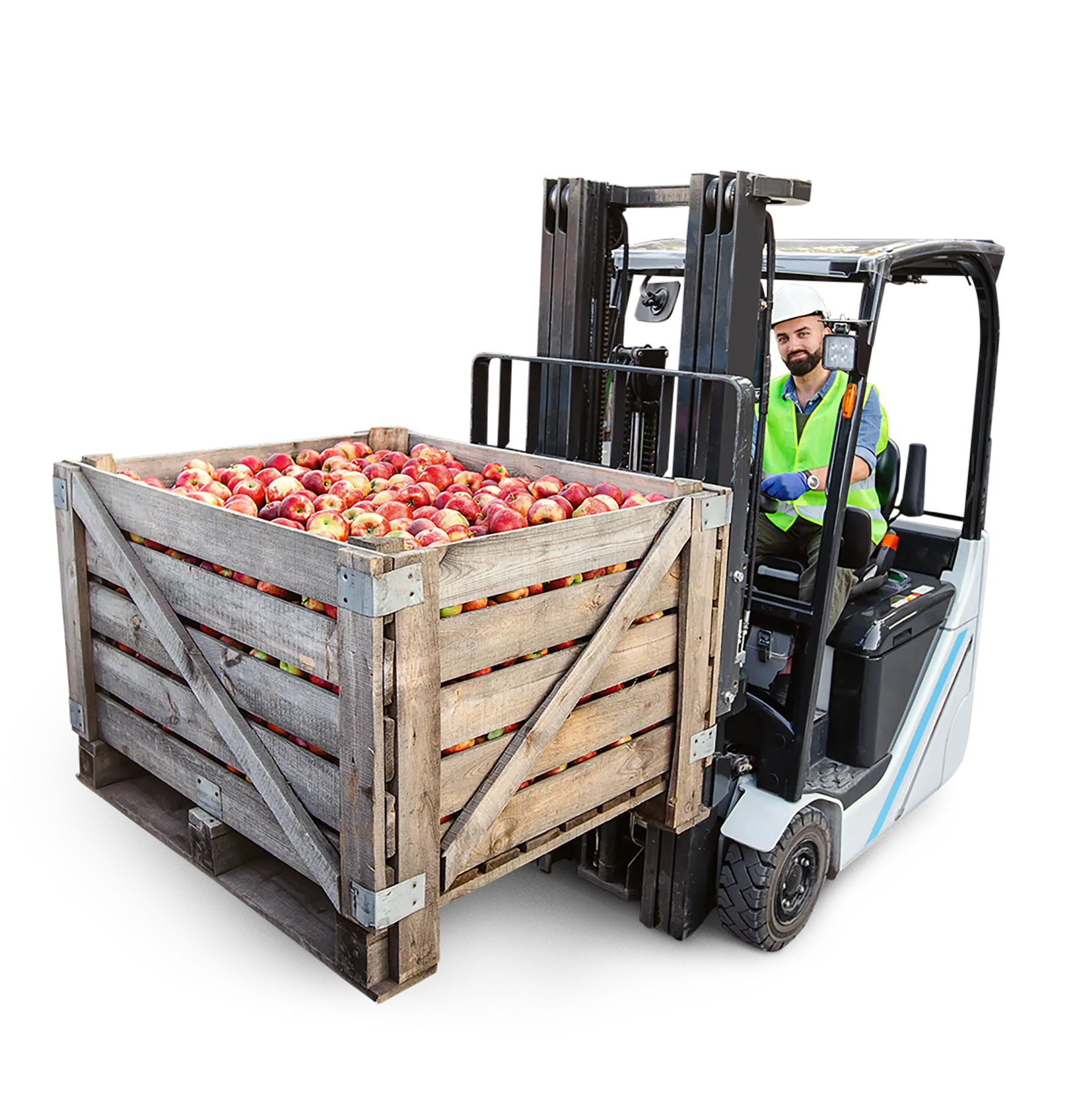Featured in this post
8 Signs It’s Time to Improve Your Food Manufacturing Software Strategy
8 Signs It’s Time to Improve Your Food Manufacturing Software Strategy

When evaluating how well your food and beverage manufacturing company’s current systems are functioning, how can you determine when you need to make a change in order to unlock better results? A good place to start is talking to your staff and getting their take on where your existing setup excels and where it falls short, but that still won’t give you a complete picture.
Unfortunately, there’s no clanging alarm bell or glaring “check engine” light to notify you when your food and beverage business technology is overdue for a tune-up. There are, however, more subtle signs to pick up on that can tip you off to the necessity of intervention and improvement—you just need to know what to look for and how a better solution can address the problems you find.
That’s why we’ve compiled this list of eight signs that it’s time to revisit your food manufacturing software and overall approach to digital transformation. With each, we’ll also cover how purpose-built platforms that operate in a single, cohesive tech stack can alleviate these issues and boost performance going forward.
1. Siloed Information and Lack of Visibility
When you don’t know where to look for critically important data—or worse yet, you don’t even know what data you have—you’ve clearly got a problem on your hands. This is frequently a symptom of homegrown systems and disparate solutions across departments, as such a configuration leads to information getting trapped in siloes and various parts of the organization working in a vacuum.
Such a situation is a perfect use case for enterprise resource planning (ERP) technology, as these cross-functional, all-in-one solutions act as a unified database and “single source of truth” for your entire organization. A good food ERP will put all of the relevant facts and figures at your employees’ fingertips, allowing them to act with agility and confidence in their day-to-day responsibilities.
2. Frequent Stoppages on Production Lines
Your company no doubt has ambitious targets to meet, including your daily production attainment goals. An unplanned stoppage on a line can really throw a wrench in your plans, not to mention turn your shop floor into a chaotic mess as team members scramble to identify the root cause of the issue and rectify it.
Overall equipment effectiveness (OEE) software is the ideal remedy in this scenario—with real-time performance results being piped into the interface as your lines run, you’ll have complete visibility into how your equipment and personnel are performing. You’ll also be able to drill down to the source of your most frustrating production-related problems and ensure they’re addressed for improvement going forward.
3. Supply Shortages in the Crunch
Few things are worse than facing a demand surge and influx of new orders when you don’t have sufficient stock of raw materials on-hand. You’re caught in a bind because you don’t want to disappoint customers or turn down opportunities to make additional revenue, but if a replenishment isn’t already on its way, you might have no other choice.
Industry-specific ERP systems come with the kind of robust inventory management tools that keep you fully informed of what’s in stock and what you’re running low on so you won’t find yourself stuck in these difficult situations. Advanced platforms, like our Aptean’s food manufacturing ERP, even have automatic reordering functions that can be set to replenish your supplies as soon as you fall below a specified threshold, giving you extra peace of mind.
4. Missed Opportunities in New Product Development
You know that today’s food and beverage market moves fast, and many trendy product categories—from paleo and keto items to functional and plant-based foods—have dedicated customer bases clamoring for innovative new offerings to suit their tastes. If your new product development process isn’t optimized and the right software isn’t in place, though, you might miss the boat and fail to realize potential profit.
With a product lifecycle management (PLM) solution built for food and beverage manufacturers, all departments involved in launching a new item—from research and development to marketing—can operate from the same “playbook” of product specifications while continuing to iterate and perfect their ideas. This kind of software also has dedicated features for compliance and effectively accelerates your time to market with automations for greater efficiency.
5. Excessive Waste and Spoilage
Faulty finished goods that must be scrapped as waste, as well as spoiled ingredients that aren’t used before they go bad, represent both a financial loss for your company as well as a drag on your sustainability efforts. Both of these problems can have a real impact on your bottom line, as the former is closely tied to profitability and the latter will affect brand reputation and how you’re perceived by today’s discerning shoppers.
A food ERP system’s inventory management module can help you manage expiration dates and freshness ranges much more smoothly, enforcing a first-expiry, first-out (FEFO) picking method that gets the most out of your goods. At the same time, OEE software can indicate where equipment malfunctions or erroneously calibrated settings are resulting in scrap and rework so that your staff can intervene and the error does not reoccur.
6. Supply Chain and Delivery Struggles
It’s no secret that the world’s supply chains are being disrupted with increasing frequency as a result of ongoing public health concerns, worker and material shortages, transportation delays and international relations. The food and beverage industry is certainly feeling the effects of these unfortunate complications, and that can really hamper how well your organization is able to function.
In part because it is so vital that food and beverage businesses know where their materials and products are in the journey from source to destination, modern ERP solutions give you full supply chain visibility, keeping you apprised of any hold-ups and when you can expect shipments to arrive. And if your manufacturing business also handles the distribution of your goods, it’s worth looking into route optimization software like Aptean Routing & Scheduling that can optimize your routes—saving you money on fuel—and help ensure that every delivery arrives on time.
7. Product Safety and Quality Concerns
We brought up the topic of brand reputation before, and there’s likely no two factors more important for maintaining your standing and relevance in the market than product safety and quality. So, can you say with certainty that your current food manufacturing software is actively aiding you in achieving optimal results on these crucial fronts?
Knowing that food safety regulations around the world are growing more stringent and compliance is of utmost importance, getting a food ERP in place that helps enforce proper standards and ensures all checks are completed with on-screen prompts to remind workers can give you the assurance you need. Bidirectional traceability also helps you adhere to legal requirements while speeding up the isolation of a contamination should an emergency occur, while allergen management tools help you protect sensitive consumers from potentially adverse effects and the negative press that might generate.
The same automated alerts can be applied for quality assurance checks that are performed by employees. Meanwhile, the system can integrate with electronic manufacturing equipment and sensors to monitor cooking and cooling temperatures, product consistency and volume to ensure that everything rolling off your lines will delight customers and deliver a satisfying experience.
8. Absence of Actionable Insights
In the food and beverage world, competition is fierce. If you’re not actively seeking out ways to improve and honing your key differentiators, you’ll find it more difficult to emerge from the pack and claim your slice of the pie at market. In this way, complacency can be the enemy of excellence.
An intelligently designed ERP platform can yield actionable insights through demand forecasting tools, powerful financial analytics, granular efficiency metrics and data on emergent sales trends. For an additional advantage, consider business intelligence (BI) software—our own solution, Aptean Business Intelligence, comes with the capability to track more than 300 built-in key performance indicators (KPIs) and uses machine learning to help you understand how changes in your processes can bring about measurable improvement.
A Full Suite of Superior Food Manufacturing Solutions
In this list of telltale signs that your tech stack may be in need of an overhaul, we’ve brought up several different food and beverage business systems that you might be interested in implementing at your facilities for the benefits they offer. Here at Aptean, we offer them all, and they function together in a streamlined and harmonious ecosystem with complementary functions and features.
With a cohesive tech stack, you'll benefit from smooth communication and enhanced transparency throughout your organization. Better still, each has been built with an in-depth understanding of the food and beverage industry and the unique challenges that companies like yours face, as well as the tools you need to tackle them.
Whether you’re considering deployment of Aptean Food & Beverage ERP, Aptean OEE for food manufacturers, Aptean Routing & Scheduling, Aptean PLM Lascom Edition, Aptean Business Intelligence or any of our other best-in-class software offerings, our dedicated professionals are here to act as a partner and ally in the journey. We champion digital transformation as an imperative for organizations that want to be prepared for the future, and we help you every step of the way with advice on best practices and top-tier support.
Keep in mind, too, that you don’t need to rush and implement all of these new platforms in one go. Our specialists can help you sketch out a roadmap, complete with expected timeline and milestones to reach, so that your business’s path to a future-proof, fully modernized foundation is as smooth and realistic as possible.
So, ready to hear more about the full suite of food and beverage manufacturing solutions that Aptean offers? Contact us today, or request a personalized demo.
How To Thrive During Food and Beverage Market Turbulence
Prioritizing modernization, optimization and a sound strategy is necessary for success in the food and beverage industry. Increase operational agility in a continually changing (and often unpredictable) manufacturing landscape.



 Jack Payne | Vice President, Product Management & Solutions Consulting
Jack Payne | Vice President, Product Management & Solutions Consulting